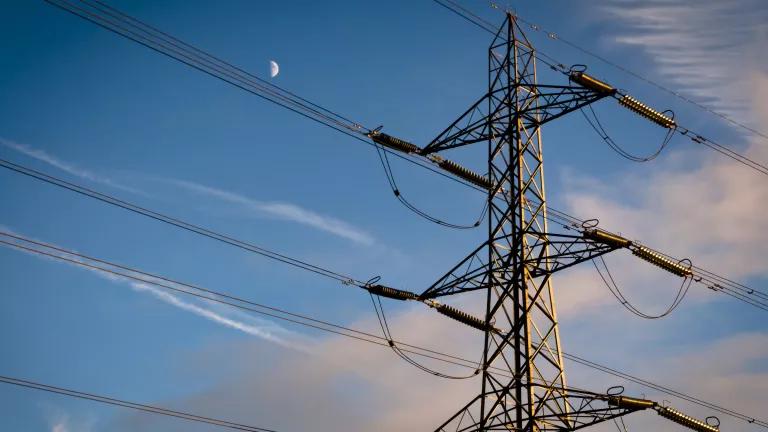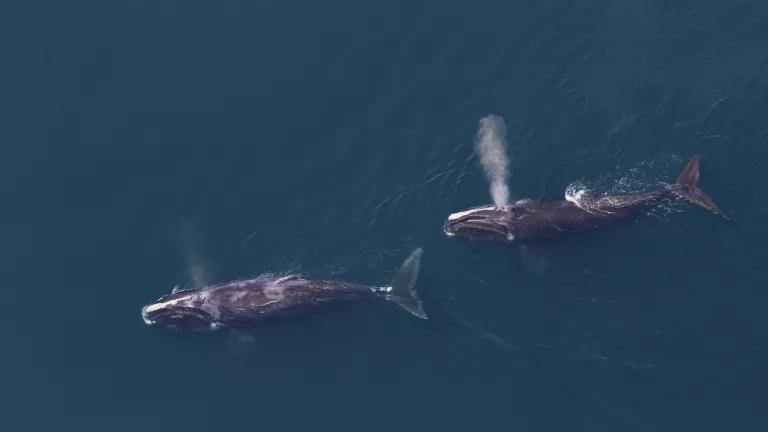We Need to Start Collaborating on Offshore Wind
States, especially along the coast, can optimize the buildout of this clean energy solution in a way that minimizes costs and environmental impacts.

Offshore wind energy is quickly becoming an essential part of our clean energy future. Recognizing this reality, coastal states, particularly those along the East Coast, are beginning to add large amounts of offshore wind to their energy mix. Collectively, coastal states have established offshore wind generation procurement goals that exceed 50 gigawatts (GW) through 2035 and over 70 GW by 2045. About 20 GW of this amount has already been procured and is expected to be in service by 2035.
While this is a good start and in line with the Biden Administration’s announced offshore wind target of 30 GW by 2030 and 110 GW by 2050, some studies have projected that this amount may have to double or even quadruple to meet our clean energy goals by 2050. Incorporating this much wind energy into our existing grid will be a major policy and infrastructure challenge. We must start planning for this now.
The delivery of this clean electricity to the onshore grid and ultimately to customers will not only require a large amount of transmission lines buried under the ocean but also upgrades to the onshore grid. Unless planned in a proactive and coordinated way, bringing this power onshore will likely require expensive onshore upgrades to the existing power grid and could have substantially higher environmental and community impacts. Worse, delaying this type of planning could make it more difficult to achieve our clean energy goals and ultimately reduce emissions from the power sector.
Why do we need to start this planning now? Currently, states have their own offshore wind goals and are independently entering into contracts with developers to meet these targets. This approach solves for urgency, but not for efficiency or affordability. This is because these early projects could monopolize transmission corridors and interconnection points that could make it more difficult and more expensive for later projects to come online.
We need to plan for a comprehensive offshore wind system, not just offshore wind lines and projects. To achieve this, states and the federal government need to coordinate their efforts and work together to determine the best way to build this offshore network in a way that minimizes environmental impacts and customer costs while ensuring that we will be able to meet our clean energy and climate goals.
The benefits of proactive planning are well documented. For example, a 2020 study by National Grid UK found that a proactively planned offshore and onshore grid in the United Kingdom could reduce overall transmission costs by about 20%, reduce the miles of offshore transmission installed in the ocean floor by a third, reduce onshore transmission upgrades by almost two thirds, and reduce the number of beach crossings by 70%. The study also found that delaying proactive planning by only five years (from 2025 to 2030) would reduce these benefits by about half. Closer to home, New Jersey’s recently-completed proactive planning effort with PJM for building onshore and offshore transmission to meet its 2035 offshore wind target will reduce total costs by over $900 million, reduce the cost of upgrades to the existing grid by about two thirds, and will reduce the number of additional transmission corridors, which will lessen environmental and community impacts.
There are several additional reasons why this proactive planning needs to begin now. First, transmission lines typically take at least a decade to plan and build, meaning that any steps taken today will likely not result in actual lines until the mid-2030s. Second, if transmission corridors and grid interconnection points are used inefficiently to achieve only near-term goals, reaching more ambitious longer-term goals will be more expensive and will likely result in increased environmental and community impacts as new transmission corridors will have to be developed. Third, the federal government is currently offering financial support, primarily in the form of tax credits, to support offshore wind generation and transmission. These funds may not be available if these planning efforts are delayed.
Thankfully, there are signs that this collaboration is beginning to occur. This past fall, Northeast states issued a Request for Information seeking comments on how to collaboratively plan for integrating significant amounts of offshore wind into their regional grid (NRDC submitted supportive comments along with other environmental organizations). At the federal level, the Department of Energy is currently conducting a study examining transmission options to support offshore wind development along the East Coast through 2050. The results of this study are expected to be released in late 2023.
These are encouraging steps, but more needs to be done. First, states should begin working with regional transmission organizations to optimize interconnection points and onshore upgrades for all known offshore wind generation interconnection needs within that region. Second, we should begin taking the first steps at planning an offshore wind grid by developing and implementing “mesh-ready” standards (like New York has done) that can connect early tie-line projects into an offshore grid at a later date. Third, federal regulators (primarily FERC) should take a more active role in coordination and consider developing new regulations in the form of transmission rights, open access regulations, and cost allocation mechanisms that can facilitate a transition to a more connected offshore wind grid.
Offshore wind energy promises to be a vital part of our clean energy future. Planning how to optimize the buildout of this clean energy solution in a way that minimizes costs and environmental impacts will ensure that we can turn this promise into a reality. There is no time to waste.



